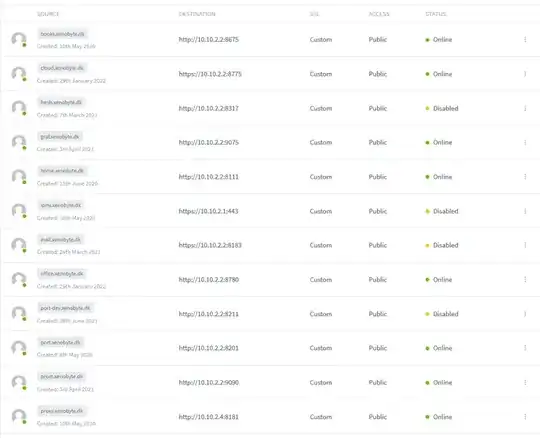I'm running a recent (V1.9) docker image of Mailu on Ubuntu server 22.04.
Now how can I run a website with some php besides this? The Mailu server has an webmail page that runs on port 80 and 443, in a subdirectory of the mailroot www.url.com/webmail. The website should be on www.url.com. I have no idea if the docker image uses apache nginx or whatever, neither in which directory to put some html code...
the ports are like this
root@jammy:~# lsof -i -P -n | grep LISTEN
systemd-r 653 systemd-resolve 14u IPv4 18958 0t0 TCP 127.0.0.53:53 (LISTEN)
sshd 721 root 3u IPv4 19021 0t0 TCP *:22 (LISTEN)
sshd 721 root 4u IPv6 19023 0t0 TCP *:22 (LISTEN)
docker-pr 4218 root 4u IPv4 31659 0t0 TCP 192.168.2.53:995 (LISTEN)
docker-pr 4232 root 4u IPv4 34450 0t0 TCP 192.168.2.53:993 (LISTEN)
docker-pr 4246 root 4u IPv4 38151 0t0 TCP 192.168.2.53:587 (LISTEN)
docker-pr 4260 root 4u IPv4 38168 0t0 TCP 192.168.2.53:465 (LISTEN)
docker-pr 4274 root 4u IPv4 30442 0t0 TCP 192.168.2.53:443 (LISTEN)
docker-pr 4288 root 4u IPv4 34463 0t0 TCP 192.168.2.53:143 (LISTEN)
docker-pr 4302 root 4u IPv4 33363 0t0 TCP 192.168.2.53:110 (LISTEN)
docker-pr 4316 root 4u IPv4 38963 0t0 TCP 192.168.2.53:80 (LISTEN)
docker-pr 4334 root 4u IPv4 33374 0t0 TCP 192.168.2.53:25 (LISTEN)
installed is
- ubuntu server 22.04 LTS
- docker 23.0.3 and docker compose 2.17.2
- Mailu mail server 1.9 as Docker container
